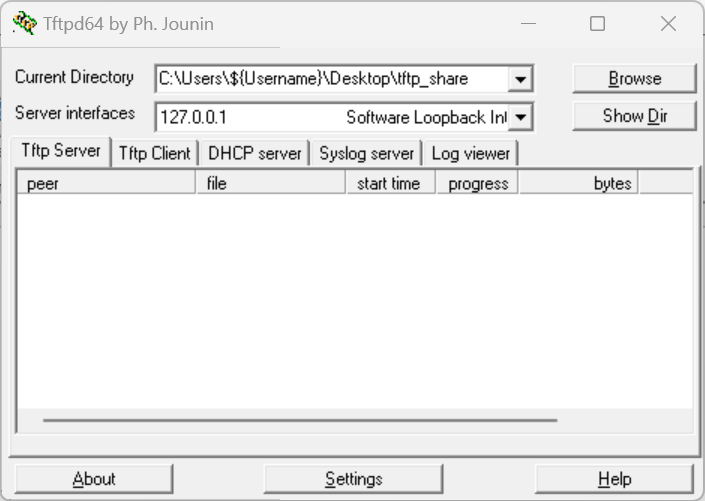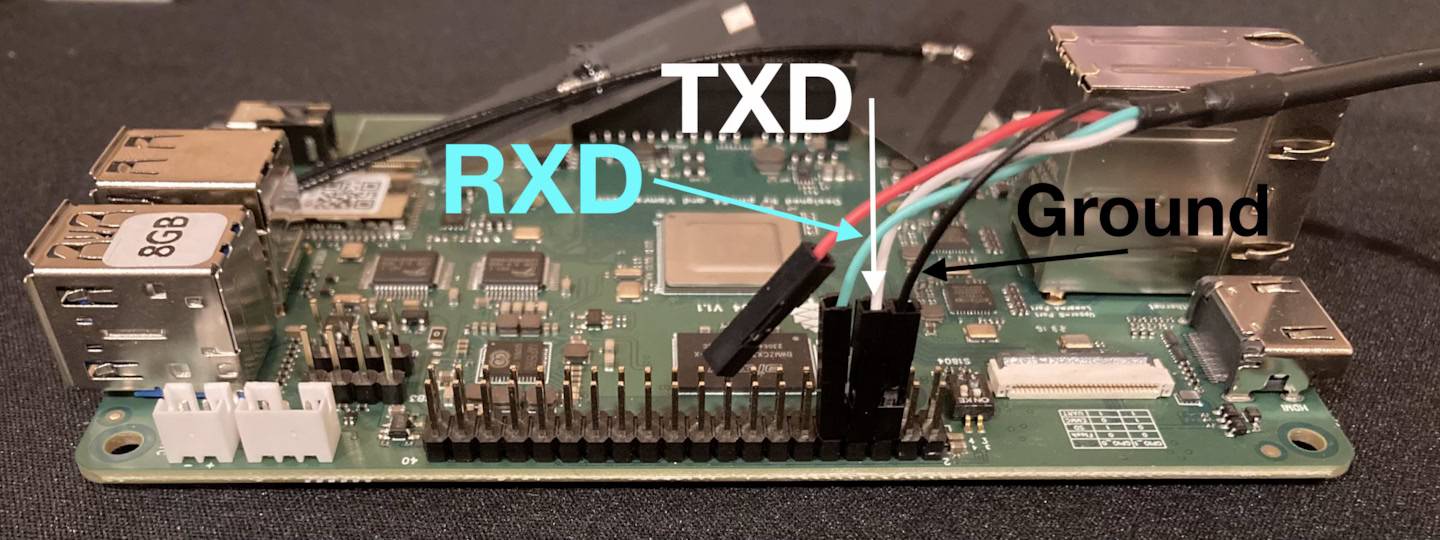User:Nuess0r/SandBox/Install Debian
Install Debian on Star64
Please help to review and edit this page or section. Information are subject to change.
This how-to guides you through the process to install Debian SID (unstable) on your Star64.
Prerequisites
Required:
- Star64 SBC
- Micro SDcard or Pine64 eMMC module
- USB serial converter with TTL output (No RS232 converter)
- Ability to network the Star64 to a computer over ethernet (Switch, Ethernet cables,...)
- Ability to write Micro SDcards or if you have only the eMMC module you also need the Pine64 eMMC USB programmer
- Computer running Linux
Update U-Boot and SPL
The Star64 ships with an integrated 128 megabit (16 megabyte) SPI NOR flash. Loaded on this flash from the factory is firmware called U-Boot and SPL but an old version designed for the StarFive VisionFive 2 SBC which is incompatible with the Star64 mainline Linux kernel (>= 6.11). The SPL (Secondary Program Loader) is the software that loads U-Boot, which in turn loads the Linux kernel. It performs similar functions to the BIOS on x86 platforms.
There are two main ways to update the SPI flash. The first uses the flashcp command which requires the Star64 to first boot into an OS. This method requires an OS able to boot from the old u-boot like Pinix from fishwaldo but unfortunately it doesn't ship with flashcp. The other method requires only the ability to load U-Boot and uses TFTP and the U-Boot tftpboot command.
Preparing The TFTP Server and UART Connection
Linux
First, on your computer (not the Star64) install a TFTP server and wget if you do not already have it.
$ sudo apt update && sudo apt install tftpd-hpa wget
Next, check that the TFPT server is running using systemctl.
$ sudo systemctl status tftpd-hpa
This should output somethng like
● tftpd-hpa.service - LSB: HPA's tftp server Loaded: loaded (/etc/init.d/tftpd-hpa; generated) Active: active (running) since Sat 2023-06-10 20:51:28 CDT; 17min ago Docs: man:systemd-sysv-generator(8) Process: 1016 ExecStart=/etc/init.d/tftpd-hpa start (code=exited, status=0/SUCCESS) Tasks: 1 (limit: 2306) Memory: 588.0K CPU: 23ms CGroup: /system.slice/tftpd-hpa.service └─1023 /usr/sbin/in.tftpd --listen --user tftp --address :69 --secure /srv/tftp Jun 10 20:51:28 debian-bookworm systemd[1]: Starting tftpd-hpa.service - LSB: HPA's tftp server... Jun 10 20:51:28 debian-bookworm tftpd-hpa[1016]: Starting HPA's tftpd: in.tftpd. Jun 10 20:51:28 debian-bookworm systemd[1]: Started tftpd-hpa.service - LSB: HPA's tftp server.
If the service is not running, try
$ sudo systemctl start tftpd-hpa
and check the status again. If it is still not running please join the #star64 channel in the Pine64 IRC, Discord, or Matrix.
Next in your home directory (/home/user) create a folder called tftp_share
$ mkdir /home/user/tftp_share
In this folder, download the u-boot-spl.bin.normal.out SPL file and the u-boot.itb U-Boot image using wget.
$ cd /srv/tftp $ sudo wget https://freeshell.de/e/riscv64/u-boot-20241028-428921_429908_429906_ocloaderase.zip $ sudo unzip u-boot-20241028-428921_429908_429906_ocloaderase.zip
Before connecting to the Star64 and updating the firmware install screen, virtual console software, so it will be possible to communicate with the Star64.
$ sudo apt update && sudo apt install screen
Next connect your USB to TTL UART adapter to the computer and list the connected serial devices.
Find the address of the TTL UART to USB adapter in the list (example: ttyUSB0) and connect to the serial device with a baud rate of 115200.
$ screen /dev/<Device Address> 115200
Where <Device Address> is the address found in the step above. Example
$ screen /dev/ttyUSB0 115200
Windows
First, install two pieces of software, tftpd64, a TFTP server for windows, and Tera Term, a virtual console for interacting with the Star64 in U-Boot.
Next on your desktop, create a folder called tftp_share
In this folder, place the the u-boot-spl.bin.normal.out SPL file and the u-boot.itb U-Boot image from [u-boot-20241028-428921_429908_429906_ocloaderase.zip this Zip file].
Next, load tftpd64 and configure the settings to have the "Current Directory" as the tftp_share folder on the desktop and "Server interfaces" is set to 127.0.0.1 Software Loopback Interface 1. The path should look something like C:\Users\${Username}\Desktop\tftp_share where ${Username} is your username on Windows.
TODO: Short intro how to use Putty.
Updating the SPI Flash
Next, connect a TTL UART to USB cable to to the Star64 with the GND cable on pin 6 of the GPIO header, TXD on pin 8, and RXD on pin 10 as well as Ethernet. Note that depending on your UART adapter you may have to switch TXD and RXD. Now power on the Star64 and enter U-Boot. You will need to press a key to prevent it from autobooting and instead enter the U-Boot command prompt.
Once you are in the U-Boot shell set some environment variables.
First, set the IP address of the Star64 and connect it to the network using the dhcp command.
# dhcp
Set an environment variable of the TFTP server to make future command easier. If you don't what the IP address of your TFTP server is you can see connected devices in your router's configuration which can usually be accessed by typing in the IP address found on the router itself.
# setenv serverip <server IP>
Where server IP is the IP address of the TFTP server. Example
# setenv serverip 192.168.1.199
Ping the TFTP server from the Star64 to make sure the connection works where <Server IP> refers to the IP address of your TFTP server. Note that if you are hosting the TFTP server on Windows, you may need to configure Windows firewall to allow ‘File and Printer Sharing (Echo Request – ICMPv4 – In)’. This is only needed to test the network connection with ping and not for the actual tftpboot command so if ping fails tftpboot may still succeed.
# ping <server IP>
Example
# ping 192.168.1.199
The result should look something like this:
Star64 # ping 192.168.1.199 Using ethernet@16030000 device host 192.168.1.199 is alive
If ping fails, please try again or please join the #star64 channel in the Pine64 IRC, Discord, or Matrix for help.
Finally, it is time to update the xSPI flash.
First, initialize the flash with the sf probe command.
# sf probe
The output should be something like:
Star64 # sf probe SF: Detected gd25lq128 with page size 256 Bytes, erase size 4 KiB, total 16 MiB
Next copy the SPL .bin.normal.out file to memory address 0xa0000000 from our TFTP server.
# tftpboot 0xa0000000 ${serverip}:u-boot-spl.bin.normal.out
Where ${serverip} is the environment variable we set earlier, no need to change it.
Then use sf update to erase and update the SPI flash from memory. In this case we are copying from memory address 0xa0000000 which we wrote to earlier with an offset of 0x0.
# sf update 0xa0000000 0x0 $filesize
Next, copy the U-Boot .img binary to memory address 0xa0000000 from the TFTP server.
# tftpboot 0xa0000000 ${serverip}:u-boot.itb
Where ${serverip} is the environment variable we set earlier, no need to change it.
Finally, write the new U-Boot binary using sf update from memory address 0xa0000000 with an offset of 0x100000.
# sf update 0xa0000000 0x100000 $filesize
Reboot the Star64 and the changes should have taken effect.
On your Linux host, disable the TFTP server again, when you don't need it anymore:
$ sudo systemctl disable tftpd-hpa
Install Debian
Prepare Debian Installation Media
Download the latest Debian installer for Risc-V targets:
https://cdimage.debian.org/cdimage/daily-builds/daily/arch-latest/riscv64/iso-cd/
Linux
Use Balena Etcha or dd to write the installer image to your SD card or eMMC drive.
$ sudo dd if=debian-testing-riscv64-netinst.iso of=/dev/sdX
Where /dev/sdX is the path of your SD card or eMMC drive. Warning: Double check the device name! Otherwise you could accidentally overwrite your system drive!
Windows
Use Balena Etcha to write the installer image to your SD card or eMMC drive.
Boot into Debian Installer
Insert your SD card or eMMC drive into the Star64 and switch it on.
Follow installation
In the tasks selection, enable SSH server
TODO: Notes on partitioning, how to use eMMC when installer is on eMMC.
Final Steps
Finish the installation" step of installer to ^a^n change 'screen' window over to command prompt in debian-installer and
$ cp -rT /target/lib/linux-image-*-riscv64 /target/boot/efi/dtb

